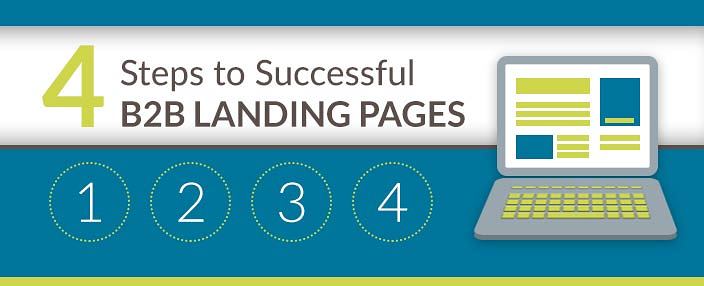We all know that B2B advertising differs greatly from B2C advertising. The stakes are much higher when you’re selling a million dollar piece of industrial equipment than when you’re selling a $20 shirt. Reaching your target audience and keeping their attention can be much more difficult. Nowhere is this felt more than in creating landing pages. More often than not, your consumers find your brand and your products through the Internet more than any other platform. So let’s take a look at the four things you need to create a successful landing page that will ultimately result in goal conversions.
To begin, you need to understand what a landing page is. A landing page is not a website; it is not Pinterest or Amazon where you happily get lost surfing and searching for hours. Your lead has limited time, and your message has to catch their attention quickly. For this reason, it is imperative to adhere to the following four steps when building your landing pages:
Simple design
A landing page is not a website. This is the most import concept to understand when starting to think about your landing page. A landing page should be simple and straight to the point. Your leads are looking for a particular product or piece of information. They are not interested in your company history, your document library or your extensive list of products. If they were, they would have gone straight to your website rather than your landing page. Decide what you want to focus on, and make the page easy to follow and understand. As a general rule of thumb I use the following setup: one or two images, a header, body copy of no more than three paragraphs and a call-to-action with a form. You may include links to your website, contact page, etc., but they should be small and in the header or footer.
One call-to-action
As I mentioned above, leads that view your landing page are only interested in one product or piece of information. Cluttering your landing page with many calls to action is the worst thing you could do. A lead is less likely to fill out a form or download your content, if they see multiple requests for engagement. If you add an embedded video on your landing page, an email subscription form and a case study to download, the chances of a lead following any of these CTAs is extremely low. They will likely feel overwhelmed and leave your landing page without engaging. You will have lost a potential lead.
Engaging and gated content
As we know, the goal of a landing page is to capture lead information in order to target and convert them. The challenge is in convincing the lead to fill out your form. We are all guilty of leaving pages once they request our personal information. It takes something very enticing to persuade leads to provide their information. This is where engaging content comes into play. You need to pick a good piece of content to hook your lead. Engaging content includes videos, case studies and white papers — anything that provides interesting information and positions your company as a thought leader. Your goal is to build your landing page and body copy around this piece of content, but you should not give this content away for free. Instead, use your landing page as a teaser, providing just enough information to hook your leads’ interest. Then, offer the content as a download, but gate it behind a form. Thus creating enough interest that leads want to know more and will not hesitate to provide their information to get it. Engaging, gated content usually results in acquiring new lead information.
Landing page forms
Once you have your leads interested in downloading your gated content, they will willingly turn to your landing page form. If you do not create this form correctly, you run a good chance of losing them. I recommend making your form as simple as possible. The more information you request, the less likely the lead will be to fill out the form. I suggest starting with three fields: first name, last name and email address. You may decide to request more information on company or industry, but I would not make these fields required. Email address is the most important field as it enables you to begin targeting the lead personally. This will allow you to gather more information on them as the lead continues to digitally interact with you. Always remember, the simpler the form, the better. Once a lead trusts you, more information will come pouring in as they continue to interact.
There are other elements to consider when creating a landing page, including SEO, language, copywriting, etc. Though these pages typically have a simple look and feel, a lot of thought, design and energy go into building each of them. Concentrate on the steps I’ve outline here, and you’ll be well on your way to building a successful landing page for your company or client.
What other elements do you find important for your landing pages?


